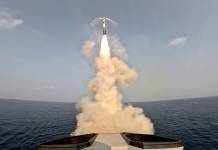India is going to deploy four Israeli Heron-TP drones along the de facto border with China. These UAVs will conduct long-range reconnaissance missions and keep an eye on the LAC – the contentious India-China border.
The drones, taken on lease, will provide the much-needed boost to Army’s intelligence-gathering capabilities amid a protracted border standoff with the Chinese PLA in Ladakh.
According to reports, the first two drones will be delivered soon and the other two will be acquired three months later. The deal for leasing four Heron TP drones was disclosed in February this year.
This new arrangement for the Indian Army was facilitated by the changes introduced in Defense Acquisition Policy last year. In a similar agreement, the Indian Navy had leased two MQ-9B SeaGuardian UAVs from the United States in November 2020.
However, military experts are of the view that Israeli Heron TP drones perform better and cheaper than the American MQ-9Bs.
The Indian military has been using drones in Ladakh to monitor Chinese activities in the region for quite some time.
Last year, it was reported that the Indian armed forces might revive and go forward with the “Project Cheetah”, which is to upgrade the existing drones to carry out offensive operations against the enemy.
Under this project, 90 Heron drones of the three services would be upgraded and will be armed with laser-guided bombs, air-to-ground and air-launched anti-tank guided missiles.
Israeli Heron-TP UAV
The Heron TP is an advanced variant of the famous Israeli drone Heron. It is a Medium-Altitude Long Endurance (MALE) unmanned aerial vehicle developed by the Malat division of Israel Aerospace Industries.
Heron-TP can reach up to 45,000 ft, a much higher altitude than the commercial airliners fly at, and can operate in all weather conditions, day and night.
It is equipped with automatic taxi-takeoff and landing systems (ATOL), satellite communication (SATCOM) for extended range, fully redundant avionics, among others.
The aircraft can stay in flight for more than 30 hours and can perform a variety of strategic missions, including intelligence gathering, surveillance, target acquisition, and reconnaissance, using various payloads, with a high level of reliability.





